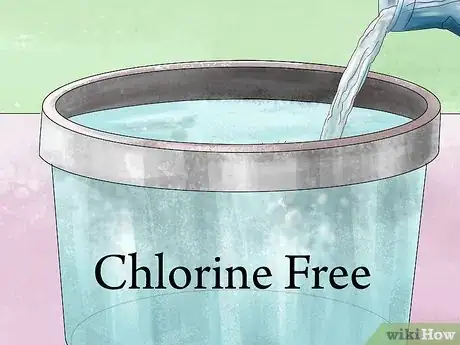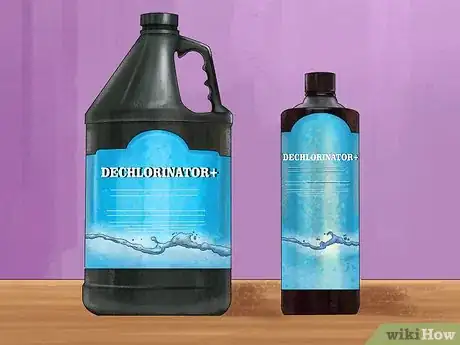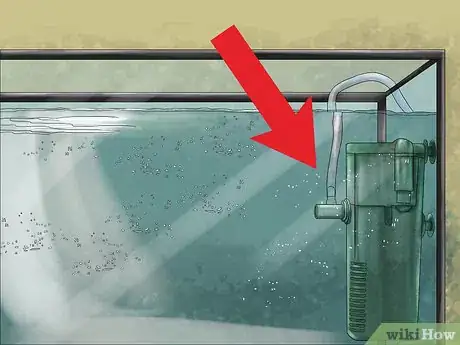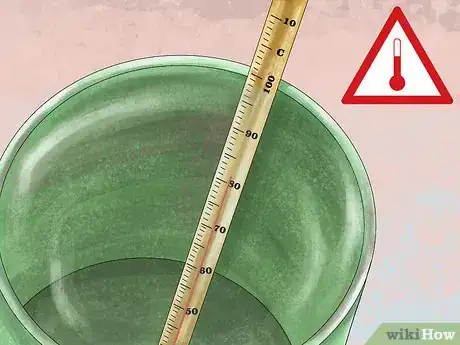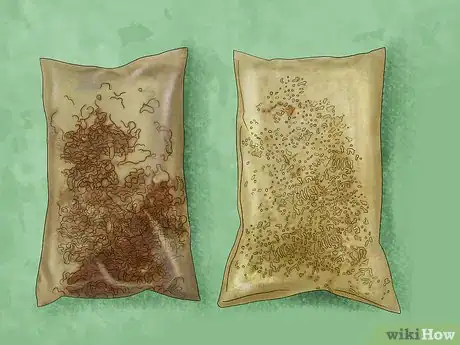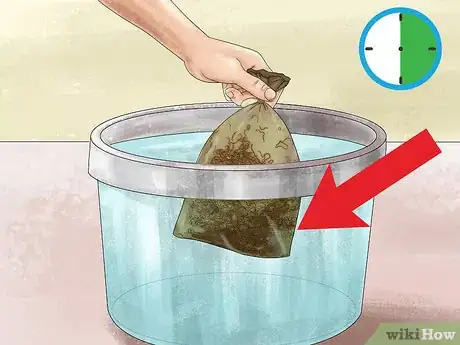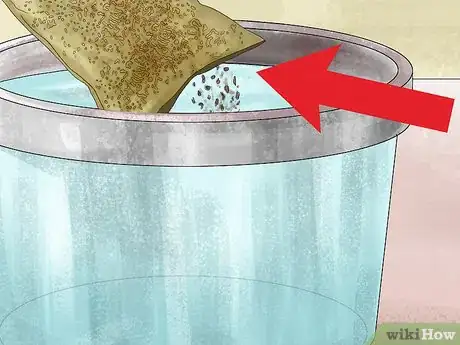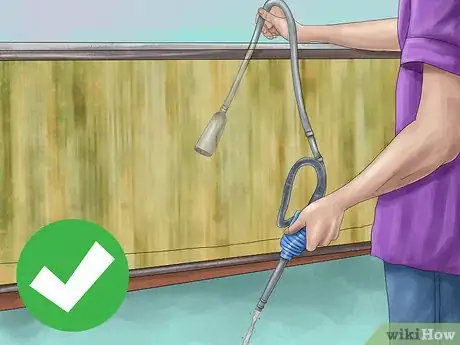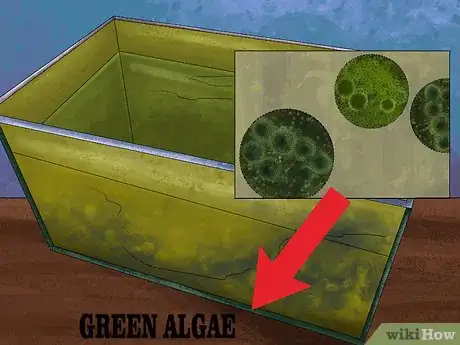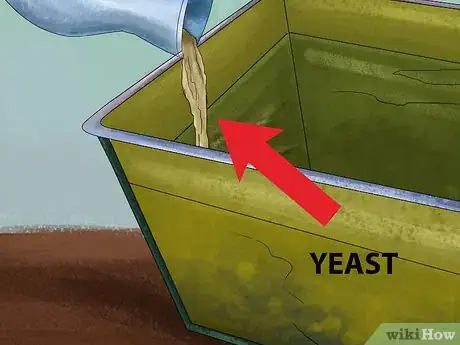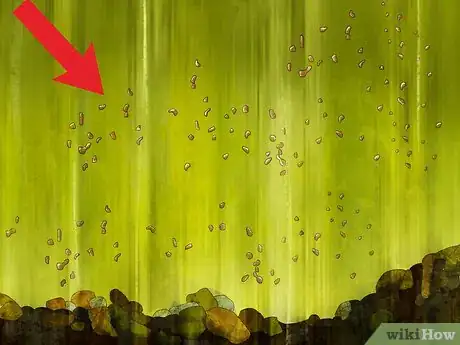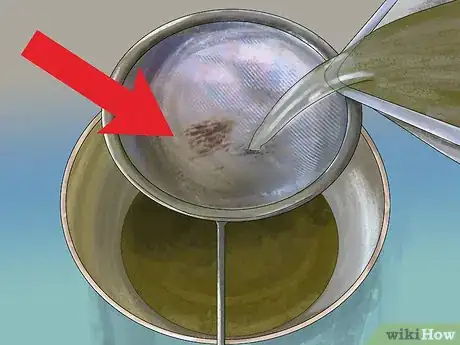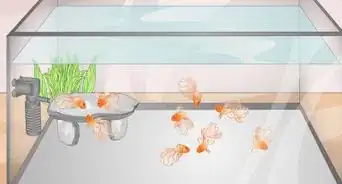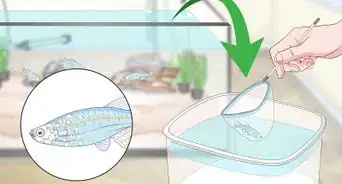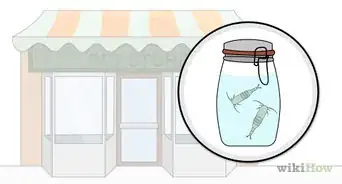This article was co-authored by wikiHow Staff. Our trained team of editors and researchers validate articles for accuracy and comprehensiveness. wikiHow's Content Management Team carefully monitors the work from our editorial staff to ensure that each article is backed by trusted research and meets our high quality standards.
There are 13 references cited in this article, which can be found at the bottom of the page.
wikiHow marks an article as reader-approved once it receives enough positive feedback. In this case, 92% of readers who voted found the article helpful, earning it our reader-approved status.
This article has been viewed 123,861 times.
Learn more...
Known as "water fleas" because of their jerky movements, Daphnia are tiny live organisms that can be a nutritious food source for pet fish or amphibians. To start a Daphnia culture, you'll need to set up their habitat and care for them correctly. If you follow the right steps, you can raise a healthy culture of Daphnia that can serve as an all-natural food source for your pets.[1]
Steps
Setting up the Habitat
-
1Fill a container with chlorine-free water. Use a five to twenty-gallon (18.92 - 75.70 l) plastic tub or aquarium to house your Daphnia cultures. Daphnia will die in tap water because of the chlorine that it often contains. If you have an existing aquarium, use the water from the aquarium instead. You can also use distilled water.[2]
- It’s easier to monitor and watch your Daphnia if you use a glass aquarium.
-
2Treat chlorinated water with a de-chlorinator. You can purchase de-chlorinator online or at a pet shop. Read the instructions on the back of the packaging and add the appropriate amount of chemical to the water. Let the solution sit in the water for 30 minutes, then proceed with the next steps.[3]Advertisement
-
3Install a bubbler line or sponge filter in the tank. Don't use an airstone or mechanical filter, as small bubbles can cause buoyancy problems in daphnia, and mechanical filters can crush them. Use the lowest air setting to keep the water relatively calm.[4]
-
4Aim for a pH level between 6.5 to 8.5. If the pH level of your water is too high or low, boil it to give it a neutral pH level. You can also used distilled water to reset the pH level to neutral.[5]
- Most water is around 7 pH.
-
5Keep the water temperature between 18-22°C (64-72°F). Daphnia cultures prefer cooler climates, so leave them in a cooler place like a basement or garage. If you are keeping the Daphnia cultures outside, make sure it doesn’t go above 22°C (72°F) or it will prevent the Daphnia from reproducing.[6]
-
6Consider setting up more than one culture. Having multiple tanks with different cultures will ensure that if one culture dies you’ll have a backup. Set up to three different tanks to house your Daphnia cultures.[7]
Adding Daphnia to the Tank
-
1Purchase the Daphnia online or at a pet store. If you buy your Daphnia online, they will usually be shipped to you within a day or two. Be careful when opening the packaging so that you don’t accidentally puncture the bags that they come in.[8]
- You can start a culture with around 30-40 Daphnia per container.
- The water that the Daphnia comes in will be yellow.
-
2Submerge the bag into the water. Place the container or bag that the Daphnia arrived in into the water for around 30 minutes so that they can become acclimated to the temperature of the water.[9]
-
3Pour the Daphnia into the water. Open up the bag or container that the Daphnia came in and carefully pour them into your tank or container.[10]
Caring for the Daphnia
-
1Change 10-20% of the water every week. Remember that you shouldn’t use regular tap water when changing the water because it contains chlorine. You can use the old water from an existing aquarium or you can dechlorinated tap water. Drain 10-20% of the water from the container and replace it with the new water.[11]
-
2Use green water high in algae. Daphnia thrive in green water that has algae, so don't remove it if it starts to form in your container or tank. The Daphnia will feed off the algae in the water and can use it as a food source. If you want to create your own green water, you can do so by leaving a bin filled with water and a handful of grass clippings uncovered for several days.[12]
- Plant fertilizer can also create green algae filled water.
-
3Feed the Daphnia one to three pinches of active yeast per day. You can purchase active yeast online or at a grocery store. When you add the yeast to the water, it will become cloudy.[13]
-
4Examine the clarity of the water the next day. The water should be clear the next day. If it’s cloudy, it’s an indication that you’re feeding them too much. Lower the amount of yeast you feed the Daphnia. If the water clears up before the 24 hours is over, it means that you need to feed the Daphnia more. Adjust the food levels until they eat all of the yeast over a 24 hour period.[14]
-
5Monitor the health of your Daphnia cultures every day. Daphnia communities can die off from temperature changes, overfeeding, or overcrowding. Avoid changing their environment drastically and monitor the tank to make sure you are feeding them enough. If you notice that Daphnia are becoming overcrowded, harvest them more regularly.[15]
-
6Harvest 1/4 of the Daphnia after a week and a half. If your culture is strong, you can harvest 1/4 of the Daphnia population. Use a net that has holes large enough to let the baby Daphnia slip through, but small enough to catch the adults. Examine the Daphnia population before harvesting. If you notice they aren't reproducing as fast as usual, delay the harvesting so their numbers can rise.[16]
- A healthy Daphnia culture can be harvested daily or every other day once it's stable depending on the size of the population.
Community Q&A
-
QuestionDo daphnia need lights?
 Community AnswerNo, they don't need light because they feed themselves. Light actually killed my pet daphnia.
Community AnswerNo, they don't need light because they feed themselves. Light actually killed my pet daphnia. -
QuestionWhat are the online shops in which daphnia is sold?
 Community AnswerYou can get it from most science supply companies such as Carolina or Flinn Scientific.
Community AnswerYou can get it from most science supply companies such as Carolina or Flinn Scientific. -
QuestionWhere I can get daphnia culture from in Jamshedpur, Jharkhand, India?
 Community AnswerYou can order online from microworms.in - they deliver the products all over India. The cost is very low and the culture is very good in quality.
Community AnswerYou can order online from microworms.in - they deliver the products all over India. The cost is very low and the culture is very good in quality.
Things You’ll Need
- Plastic container or aquarium
- Dechlorinating chemicals
- Airstone or filter
- Live Daphnia
- pH test
- Active yeast
References
- ↑ https://www.caudata.org/daphnia/
- ↑ https://en.aqua-fish.net/articles/culturing-daphnia
- ↑ http://www.firsttankguide.net/dechlorinator.php
- ↑ http://www.mkka.net/articles/Daphnia_Culture_Made_Simple.pdf
- ↑ https://www.gaiam.com/blogs/discover/how-to-increase-the-alkalinity-of-your-water
- ↑ http://www.livefoodcultures.com/Daphnia.html
- ↑ http://www.discushatchery.com/raisingdaphnia.html
- ↑ https://en.aqua-fish.net/articles/culturing-daphnia
- ↑ https://www.youtube.com/watch?v=1Gax6lldLYU&feature=youtu.be&t=4m9s
- ↑ https://www.youtube.com/watch?v=2XL_czMydqU&feature=youtu.be&t=1m39s
- ↑ http://www.selectaquatics.com/ft_4_daphnia.htm
- ↑ http://www.livefoodcultures.com/microcultures.html
- ↑ http://www.selectaquatics.com/ft_4_daphnia.htm
- ↑ http://www.selectaquatics.com/ft_4_daphnia.htm
- ↑ http://www.reading.ac.uk/web/files/biosci/Culturing_Daphnia_201KB.pdf
- ↑ https://www.caudata.org/daphnia/#cult4
About This Article
Daphnia are tiny organisms that make a nutritious food source for fish and amphibians. To start a Daphnia culture, you’ll need a 5 to 20-gallon plastic tub or aquarium. Fill it with chlorine-free water or use tap water and a de-chlorinator, since chlorine can be lethal to Daphnia. Install a bubbler line or sponge filter in the tank on the lowest setting to keep the water calm. Aim for a pH level between 6.5 and 8.5 and a temperature of 64 to 72 degrees Fahrenheit. Before you introduce your Daphnia to the water, submerge the bag in your tank so they can become acclimated to the water temperature. After about 30 minutes, open the bag and pour them into the tank. Feed them a couple of pinches of active yeast every day. For more tips, including how to change your Daphnia culture’s water, read on!
